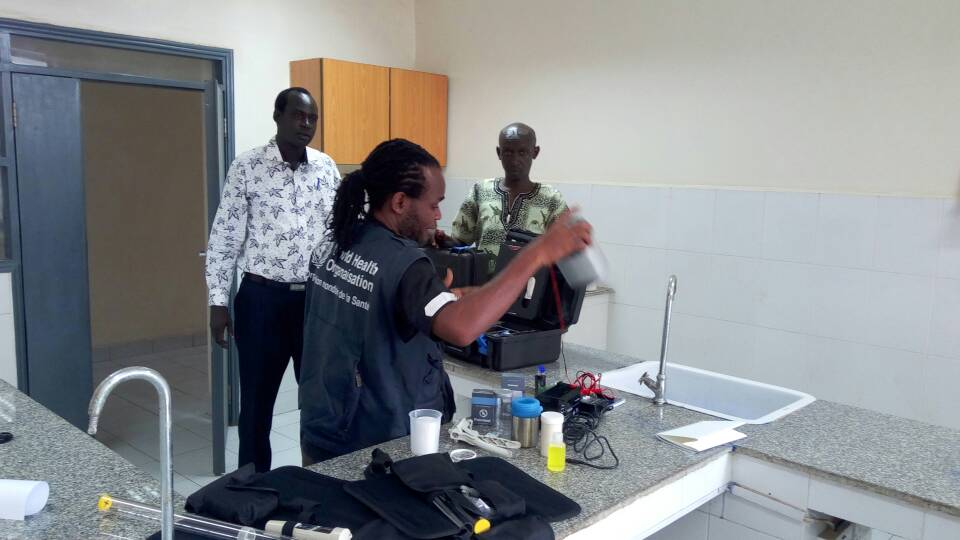 Water quality control is a critical aspect of maintaining the health and well-being of both humans and the environment. It refers to the management of the chemical, physical, and biological characteristics of water, ensuring that it meets the required standards for consumption, industrial processes, and ecological sustenance (WHO, 2017). The importance of water quality control cannot be overstated, as it directly impacts public health, environmental conservation, and economic growth. This article delves into the importance of water quality control, the processes involved, and the scientific research that supports its implementation.
Water quality control is a critical aspect of maintaining the health and well-being of both humans and the environment. It refers to the management of the chemical, physical, and biological characteristics of water, ensuring that it meets the required standards for consumption, industrial processes, and ecological sustenance (WHO, 2017). The importance of water quality control cannot be overstated, as it directly impacts public health, environmental conservation, and economic growth. This article delves into the importance of water quality control, the processes involved, and the scientific research that supports its implementation.
Importance of Water Quality Control
1. Public health protection
The primary goal of water quality control is to protect human health by ensuring the provision of safe and clean water for consumption. Waterborne diseases such as cholera, dysentery, and typhoid are caused by ingesting contaminated water, affecting millions of people worldwide (CDC, 2018). Water quality control helps prevent such diseases by monitoring and regulating contaminants, including bacteria, viruses, and toxic chemicals, in drinking water sources (WHO, 2017).
2. Environmental conservation
Water quality control plays a crucial role in preserving ecosystems and the biodiversity that depends on them. Pollution from industrial and agricultural activities, as well as urbanization, can lead to the deterioration of water bodies, affecting the flora and fauna that rely on them (EPA, 2020). By monitoring and controlling the levels of pollutants in water, environmental conservation efforts can be strengthened, preserving the ecological balance and ensuring the sustainability of natural resources.
3. Economic growth
Clean and safe water is a prerequisite for various industries, including agriculture, manufacturing, and tourism. Poor water quality can hinder economic growth by affecting food production, industrial processes, and recreational activities (UN-Water, 2018). By maintaining water quality, industries can thrive, leading to job creation and overall economic development.
Water Quality Control Process
The process of water quality control involves various stages of monitoring, assessment, and management to ensure the maintenance of the required standards. These stages involve multiple stakeholders, such as government agencies, industries, scientists, and the public.
1. Monitoring
Monitoring is the first step in the water quality control process, involving regular collection and analysis of water samples from various sources, including rivers, lakes, and groundwater (EPA, 2020). Advanced techniques, such as remote sensing and real-time monitoring systems, are increasingly being employed for efficient data collection (Gholizadeh et al., 2016). The data gathered during monitoring is essential for identifying pollution sources, assessing the effectiveness of current management strategies, and informing future actions.
2. Assessment
Assessment entails evaluating the collected data to determine the compliance of water quality with established standards and guidelines. This involves comparing the concentrations of various contaminants, such as heavy metals, nutrients, and pathogens, with the acceptable limits set by regulatory agencies (WHO, 2017). Additionally, water quality indices and models can be used to assess the overall status of water bodies and predict the potential impacts of pollution on human health and the environment (Sutadian et al., 2016).
3. Management
Based on the findings of the monitoring and assessment stages, management actions are taken to control and mitigate water pollution. These actions may involve the implementation of regulatory measures, such as setting discharge limits for industries and promoting best management practices for agricultural activities (EPA, 2020). Furthermore, public awareness campaigns and community engagement initiatives can be employed to encourage responsible water use and conservation.
Scientific Research and References
Water quality control is supported by extensive scientific research and technological advancements, which provide the necessary tools and knowledge for its effective implementation. Some examples of recent studies in this field include:
1. Gholizadeh, M. H., Melesse, A. M., & Reddi, L. (2016). A comprehensive review on water quality parameters estimation using remote sensing techniques. Sensors, 16(8), 1298. doi:10.3390/s16081298
This study reviews the application of remote sensing techniques for monitoring water quality parameters, highlighting their advantages and challenges.
2. Sutadian, A. D., Muttil, N., Yilmaz, A. G., & Perera, B. J. C. (2016). Development of a water quality index for rivers in West Java Province, Indonesia. Ecological Indicators, 61, 63-72. doi:10.1016/j.ecolind.2015.09.019
This research develops a water quality index for rivers in West Java, Indonesia, demonstrating its applicability for assessing the status of water bodies and informing management decisions.
3. World Health Organization (WHO (2017). Guidelines for drinking-water quality: Fourth edition incorporating the first addendum. Geneva: World Health Organization.
These provide a comprehensive overview of the various aspects of water quality control, including the establishment of standards, monitoring, and management strategies.
Conclusion
Water quality control is essential for ensuring public health, environmental conservation, and economic growth. Through a systematic process of monitoring, assessment, and management, supported by scientific research and technological advancements, the quality of water resources can be maintained and protected for present and future generations.








